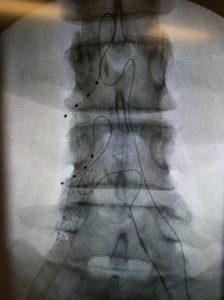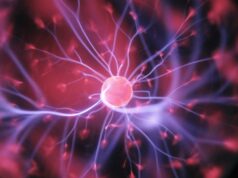Dorsal root ganglion (DRG) stimulation is a safe and effective therapy for multiple chronic pain disorders, concludes a pooled analysis published in Neuromodulation. The authors, Frank J P M Huygen (Erasmus University Medical Center, Rotterdam, the Netherlands) and colleagues emphasise that, with the advent of new stimulation modulators in recent years, “it is important that treatments are tailored to specific diagnoses and conditions”. With this is mind, they say that DRG stimulation therapy is most successful for treating focal pain in carefully selected patients.

According to Huygen and colleagues, chronic pain affects approximately 20–30% of the population in the USA and Europe, and has a wide range of aetiologies. Therefore, the authors aimed to identify differences in the effectiveness of DRG stimulation by pain aetiology or location, and to investigate the generalisability and reproducibility of individual prospective studies following patients for 12 months.
In total, seven studies were identified that met pre-defined acceptance criteria: one prospective, randomised comparative trial and six prospective, single-arm, observational studies. Within these, 217 patients with a permanent implant at 12-month follow-up were analysed. “The weighted mean pain score for all patients decreased from 7.8 at baseline to 3.4 at 12 months,” highlight the authors. In relation to specific pain aetiologies, the most common was found to be causalgia (N=104; 48%), followed by back pain (N=53; 24%) and complex regional pain syndrome type 1 (N=46; 21).
The most frequently reported areas of primary pain were leg (N=64), foot (N=50), back (N=37), buttocks (N=18), and groin (N=11). For these discrete regions, Huygen et al noted that pain scores at 12 months ranged from 1.7 (groin) to 3.0 (buttocks). In terms of responder rates for primary pain areas, foot and groin areas elicited rates of 80%, with 75% for leg, 70% for back, and 59% for buttocks.
In addition to examining pain scores, patient-reported outcomes were also measured, which were weighted by study sample sizes and subsequently pooled. Specifically, Huygen and his team measured quality of life (using the EQ-5D instrument), mood states (through the Profile of Mood States [POMS] and therapy satisfaction) and physical function (Brief Pain Inventory [BPI], Oswestry Disability Index [ODI]).
“Each instrument showed a substantial improvement at the 12-month follow-up visit,” write the authors. EQ-5D index was found to increase from 0.38 to 0.69, while mood disturbance decreased from 25.6 at baseline to 7.3. Pain severity was seen to decrease by 3.1 points on BPI, with pain interference also decreasing by 2.8. Further, Huygen and colleagues put forward that in patients with low back pain, disability reported on ODI was found to reduce from severe disability at baseline (mean: 43.8) to minimal disability (mean: 17.5).
Lastly, the authors acknowledge the most frequently reported procedure- and device-related complications. Pain at the implantable pulse generator (IPG) pocket site (N=26, 10.2%) was the most common complication, while a total of 15 lead fractures and 15 lead migrations (both 5.9%) were reported. Of the 13 infections (5.1%) that occurred across the studies, seven appeared at the IPG site. Yet, Huygen et al argue: “The procedural complications reported across the seven studies in our pooled analysis are in line to those observed for other neurostimulation therapies.”
Further discussing the findings, they allude to the “only randomised controlled study” to assess the efficacy of DRG stimulation: the ACCURATE trial. Although this trial demonstrated slightly higher effectiveness metrics than the current study, Huygen and team argue, “The [discrepancy] is not unexpected, given the addition of post-market data collected in typical clinical settings and heterogeneous patient populations.”
Concluding their findings, they maintain that DRG stimulation is an effective therapy for multiple chronic pain disorders, and add: “It is a safe and widely used therapy for patients that have failed to receive pain relief and quality of life improvements from other interventions.”













